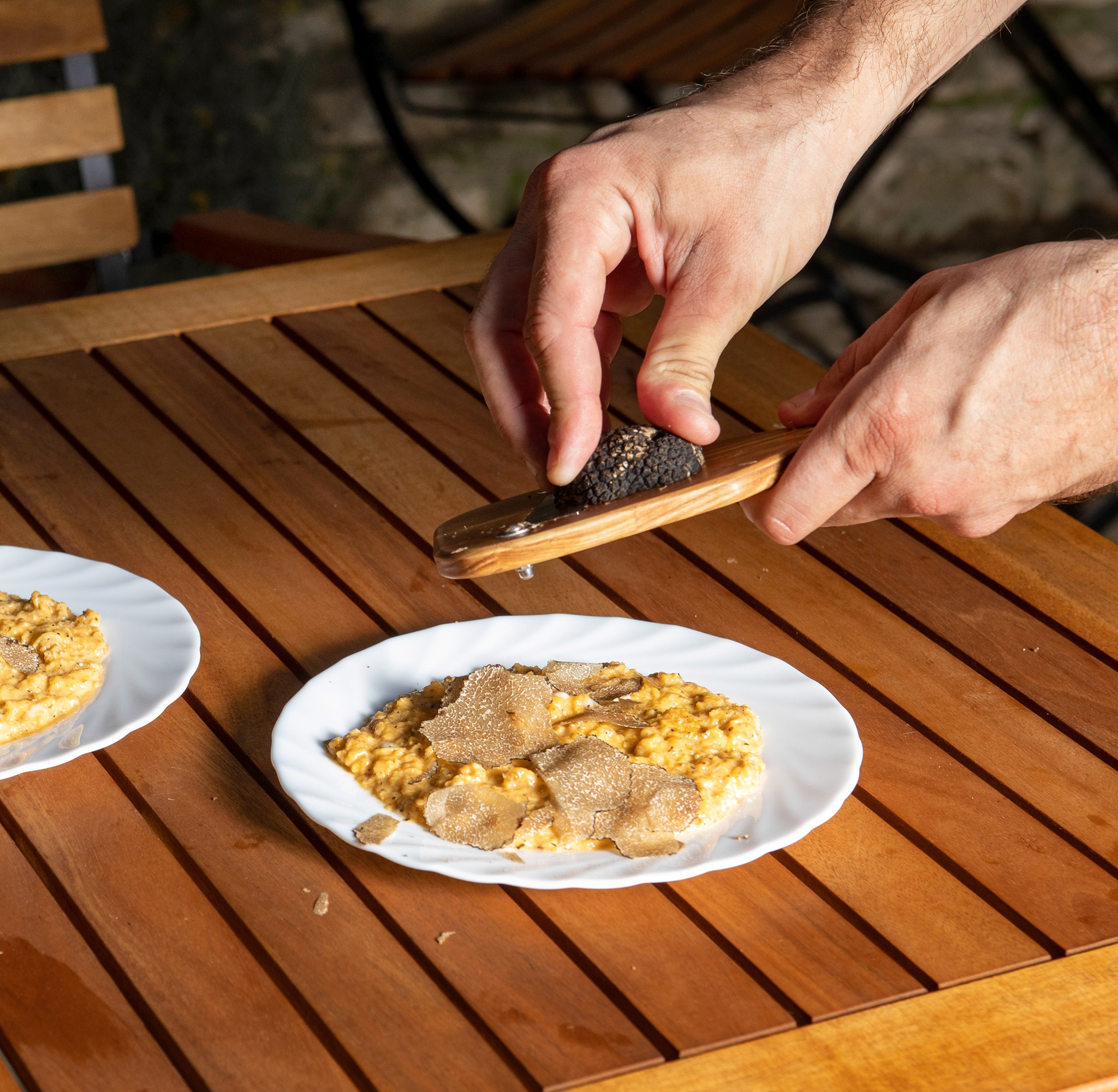Istrian Truffles
TRUFFLES IN ISTRIA
The treasure of Istrian soil
WHAT ARE TRUFFLES?
Truffles are a special type of underground fungi that grow beneath the surface, at a depth of 5 to 30 centimeters. Their natural habitat is moist and rich soil, abundant in humus, sand, and gravel, most often in symbiosis with the roots of oak, hazel, poplar, and hornbeam trees. Their distinctive and unique aroma and flavor make them one of the most prized delicacies in the world of gastronomy.
Unlike other mushrooms, truffles grow underground, making it impossible to find them without the help of specially trained sniffer dogs, whose exceptional sense of smell allows for the discovery of these hidden gems of nature.
Truffle Hunting in Istria
ISTRIA – a PARADISE FOR TRUFFLES
Istria is one of the most famous and richest truffle-growing regions in Europe. The Motovun Forest, located in the Mirna River valley, is particularly renowned, as its unique microclimate, specific soil composition, and high humidity provide ideal conditions for the growth of premium truffles.
Some of the largest truffle specimens in the world have been found here, including one that entered the Guinness Book of Records in 1999 as one of the largest white truffles ever discovered.
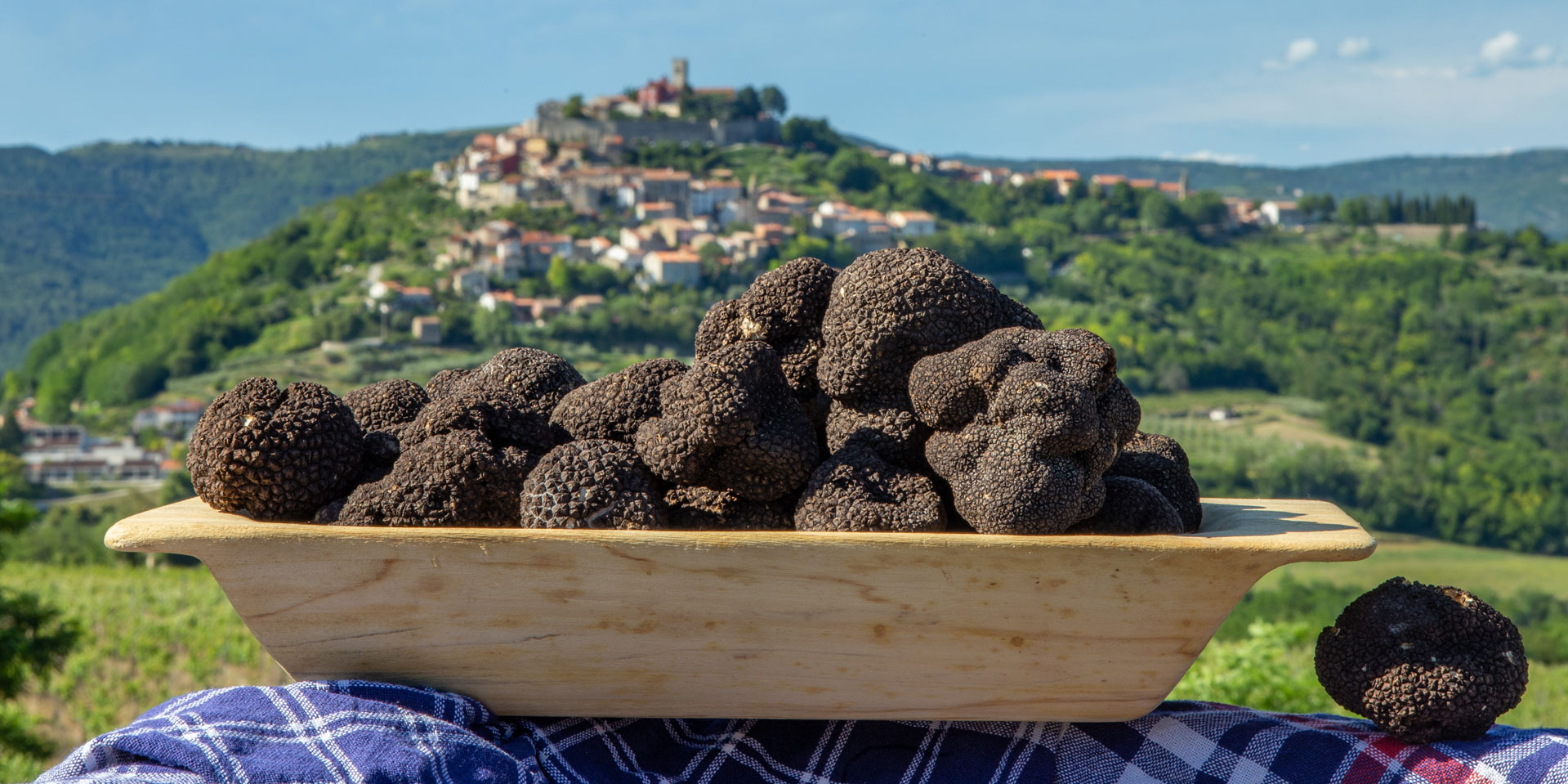
Tuber Magnatum Pico – White Truffle
Tuber Magnatum Pico, known as the Istrian white truffle, is considered the most valuable truffle species in the world. Its rarity, delicate structure, and exceptionally strong, distinctive aroma make it the pinnacle of any gastronomy. The aroma of white truffle is layered and complex – earthy, slightly garlicky, with notes of honey, fermented cheese, and mild spicy tones. Freshly grated white truffle transforms even the simplest dish into a gourmet masterpiece.
It’s the true star of the autumn season in Istria, when the white truffle hunting season in the Motovun Forest begins every September. Truffle enthusiasts from all over the world come to Istria to experience the unique aroma of fresh white truffle. This precious fungus pairs perfectly with simple dishes that will highlight its refined scent: homemade Istrian pasta (fuži, pljukanci), fried eggs, freshly baked bread with olive oil, meat or fish carpaccio, and even simple mashed potatoes.
The white truffle season lasts from September 1 to December 31 , and it’s precisely autumn and early winter when the truffle develops its full aromatic potential.
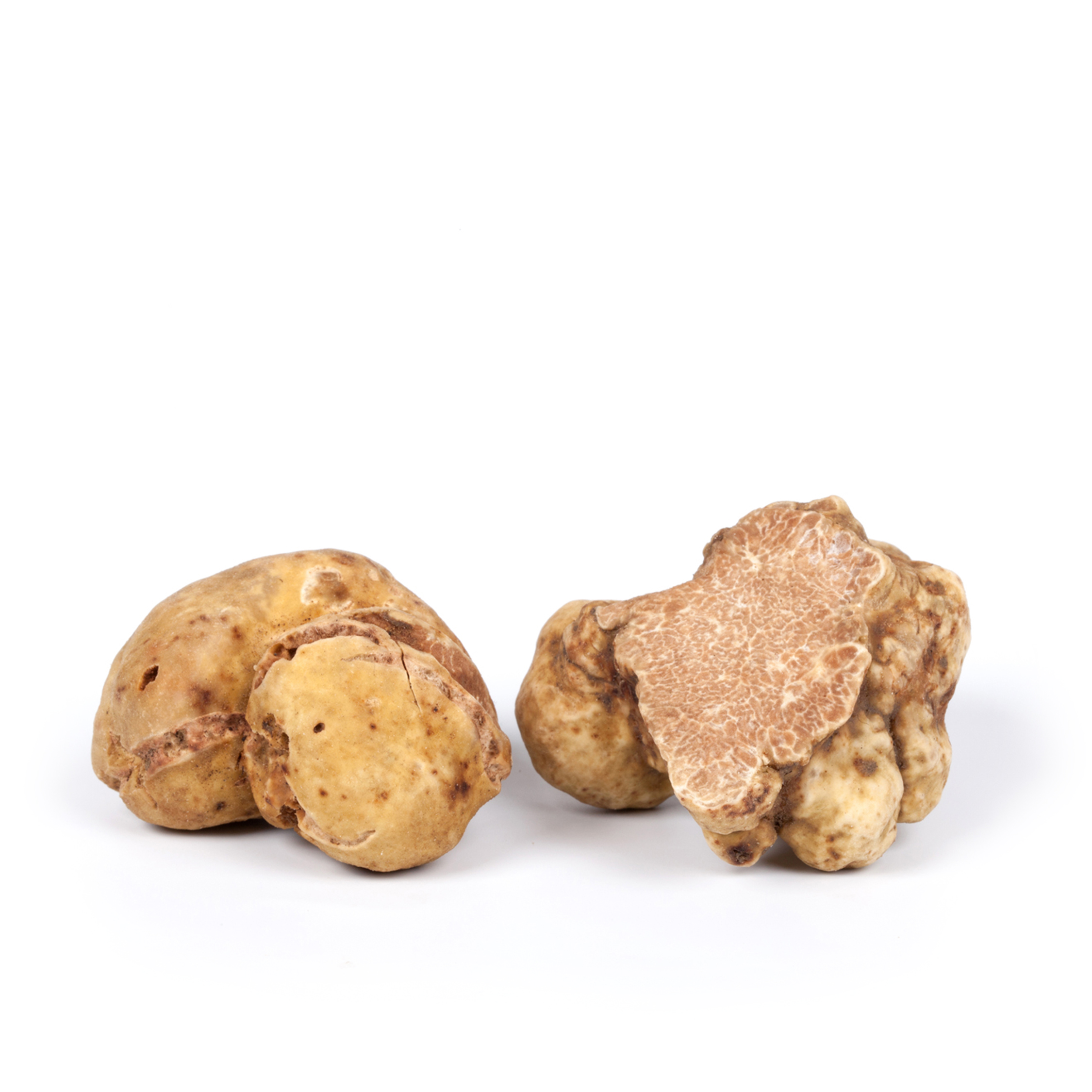
Tuber Melanosporum – Black Noble Truffle
Tuber Melanosporum, also known as the black winter noble truffle, is the second most valuable treasure of the Istrian truffle scene. Unlike the white truffle, the black noble truffle has a more compact and firmer structure, dark brown almost black color, with a fine white net-like texture on the inside. Its scent is strong, warm, nutty, slightly sweet and hazelnut-like, with hints of chocolate and forest soil.
This type of truffle is particularly prized among professional chefs for its ability to withstand light heat treatment, which further releases the richness of its aromas. It pairs ideally with pasta, creamy risottos, meat, eggs, and even desserts like chocolate mousses.
The harvesting season for black noble truffles lasts from December to March, when the moist winter soil of the Motovun Forest provides optimal conditions for its development. Due to its availability in the colder months, the black noble truffle brings warmth to winter dishes.

Tuber Aestivum – Summer Black Truffle
Tuber Aestivum, better known as the summer black truffle or scorzone, is the most common and accessible truffle in Istria. It is characterized by a black rough outer surface and a light brown interior with pronounced white veins. Its scent is much milder and more subtle than that of white and winter black truffles – slightly nutty, fresh, with mild aromas of forest soil and hazelnuts.
Due to its mild aroma, the summer black truffle is perfect for everyday culinary use. It can be used raw, lightly grated on already prepared dishes, but also gently heated to enhance its aromas. It is most commonly found in light summer dishes: salads, light pasta, carpaccio, fresh cheeses, and even as an addition to truffle pizzas.
The summer truffle is present in Istrian forests from May to September, allowing truffle enthusiasts to enjoy its fresh taste even in the warmer months when other varieties are not available.
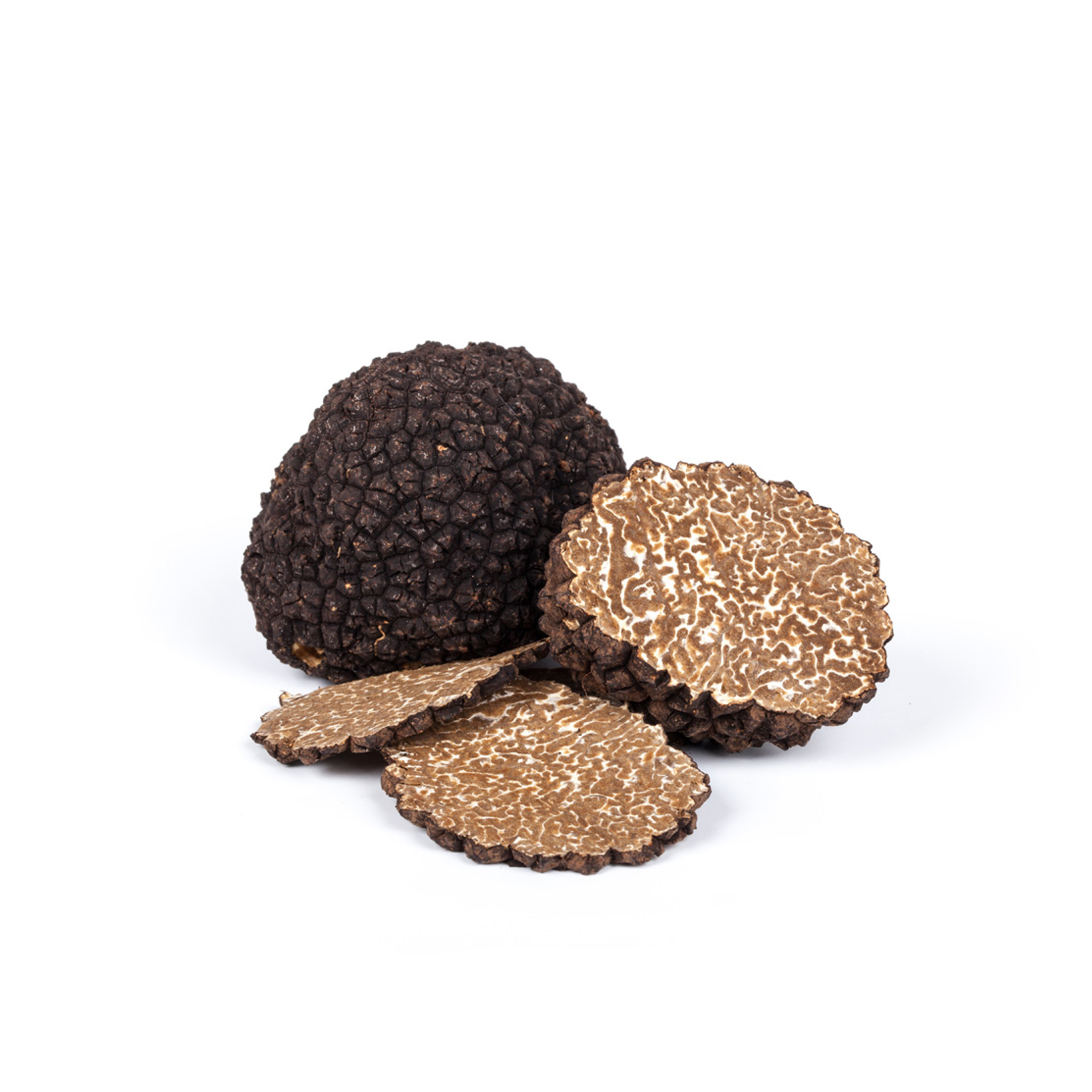
Tuber Uncinatum – Autumn Black Truffle
Tuber Uncinatum, known as the autumn black truffle, is very similar to the summer truffle, but with a more intense aroma and deeper, more complex flavor structure. Its interior is darker and fuller, with more pronounced white veins, and its aroma is reminiscent of a combination of summer truffle and winter noble truffle, with pronounced earthy, nutty, and slightly mushroomy tones.
This type of truffle is ideal for the transitional autumn period, when temperatures drop and nature transitions into its richer, warmer flavors. The autumn black truffle is excellent for pumpkin cream soups, pasta sauces, mushroom dishes, omelets, and warm appetizers. It comes particularly well to the fore when combined with aromatic Istrian olive oil and homemade cheese.
The harvesting season for autumn black truffles lasts from October to the end of January, providing a gastronomic link between summer and the cold winter season.

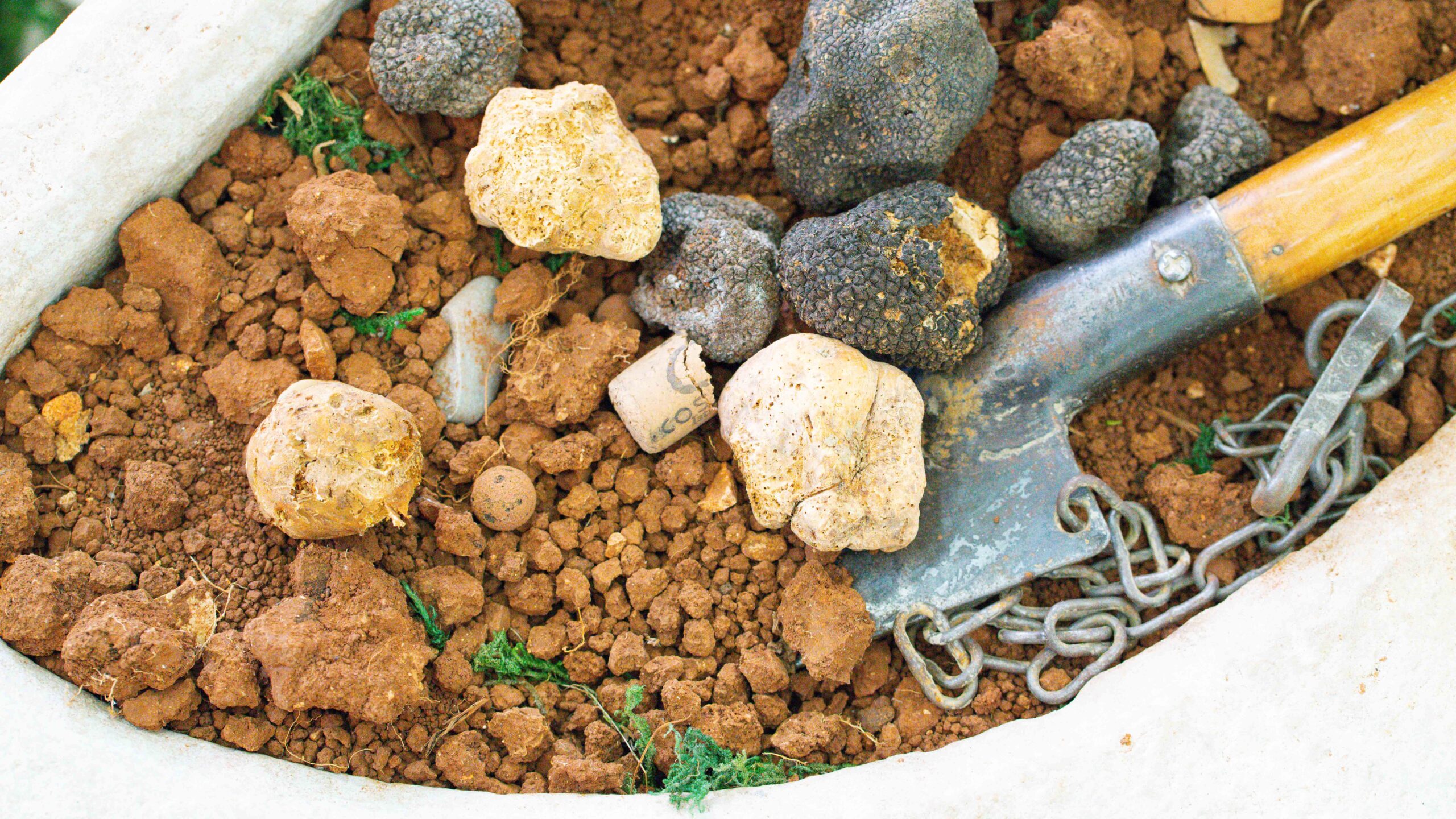
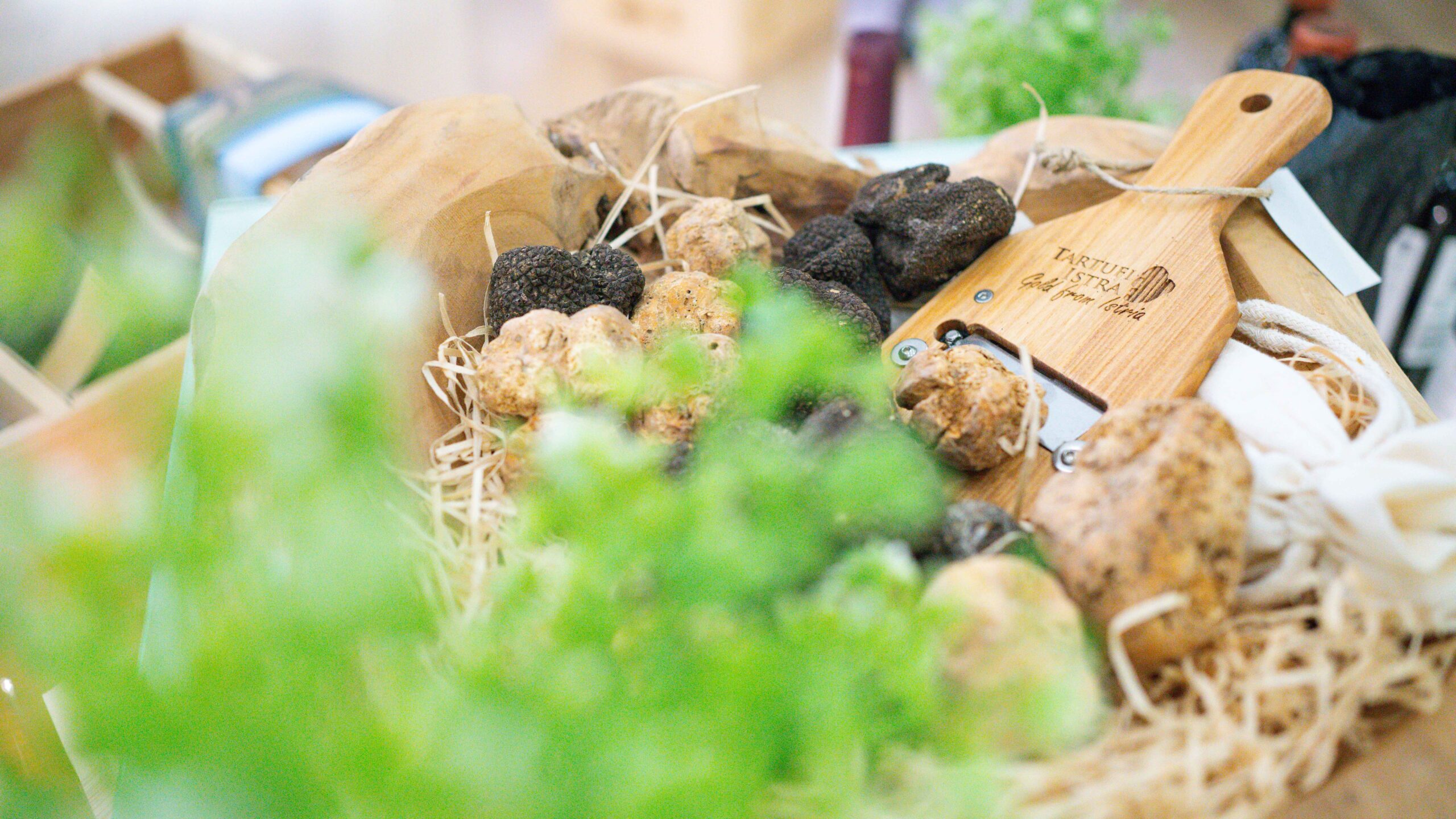
Thousands of Years in Istria
HISTORY OF TRUFFLES
Truffles have been present in human history for thousands of years. They were known and appreciated by the Babylonians and Romans. The ancient Romans believed that truffles had aphrodisiac properties and served them at lavish patrician feasts.
In the 14th century, truffles began to be seriously mentioned in European literature, and a significant contribution to their study was made by the French botanist Joseph Pitton de Tournefort. The first book on truffles appeared in the early 18th century (Alfonso Ciccarelli), while the scientific classification of truffles began in the 19th century thanks to the work of Italian mycologist Carlo Vittadini and French scientists the Tulasne brothers.
The Congress of Vienna in 1815 was the first historical event where truffles were officially served at a state banquet, marking the beginning of their ascending career in world gastronomy. Today, truffles are an indispensable delicacy on the menus of the most prestigious restaurants around the world, and Istrian truffles have become synonymous with top quality and authenticity.
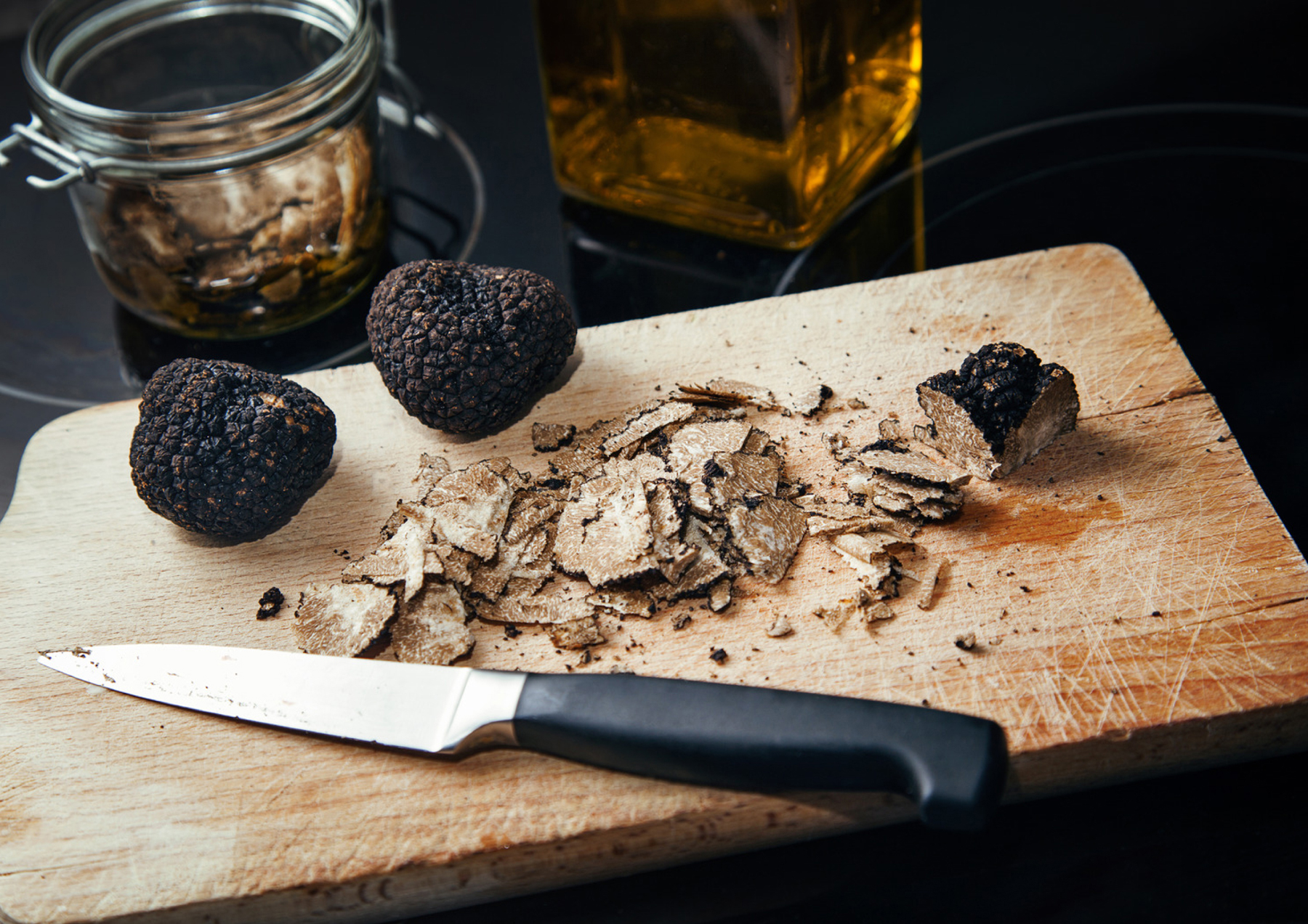
EXPLORE FRESH TRUFFLES
TRUFFLE TASTING AND HUNTING
Today, Istria, along with Piedmont in Italy and southern France, is one of the world’s most important truffle-growing regions. Motovun Forest rightfully bears the epithet of “Croatia’s Mecca for truffles”, attracting gastronomy lovers, chefs, gourmets, and adventurers from all over the world.
If you want to experience the whole truffle story, we invite you to a truffle hunt in the Motovun Forest and a tasting of premium truffle products in our tasting rooms in Motovun, Rovinj, and Poreč. From freshly grated white truffles, creamy spreads, cheese, olive oil, to premium salami and wine – the Tartufi Istra craft offers you the opportunity to taste the authentic flavors of Istria, directly from the source.
